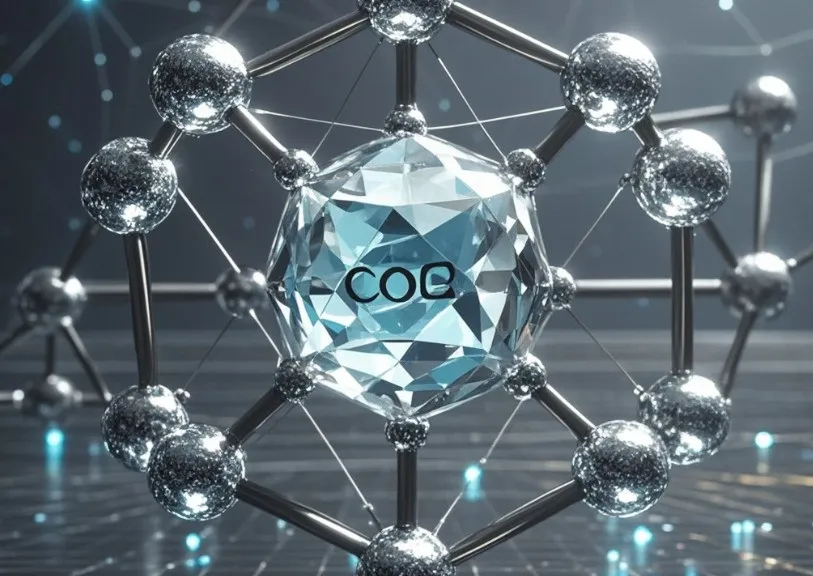Pos:
Home KnowledgeTechnologyHOW does diamond conduct thermal energy? Explore the Powerful Heat Dissipation of Diamond Heat SinksFrom smartphones to supercomputers, from new energy vehicles to deep space exploration, the application fields of diamond thermal conductivity technology continue to broaden, driving the wave of scientific and technological progress.
The Mystery of Diamond's Thermal Conductivity
Diamond, with its chemical composition of carbon, has the highest thermal conductivity in nature, due to its unique crystal structure. Diamond crystals are formed by carbon atoms through sp³ hybridized orbitals to form a tetrahedral structure, with each carbon atom forming strong covalent bonds with four neighboring carbon atoms. This structure allows diamond to have extremely high bonding energy and interatomic forces, providing good conditions for heat conduction.

Diamond Thermal Conductivity Application Areas
1. High-performance electronic packaging materials
In high-end electronic devices, diamond thermal conductive materials are used as encapsulants to quickly conduct heat generated by chips to prevent performance degradation or damage due to heat buildup. Diamond's thermal conductivity far exceeds that of traditional silicon-based materials, providing a revolutionary solution for heat dissipation in electronic devices.
2. Laser equipment heat sink
In the field of laser technology, diamond is used as a key heat dissipation component in laser devices due to its excellent thermal conductivity and optical transparency. This helps to increase the output power and stability of lasers while extending their service life.
3. Thermal management in aerospace
In the aerospace industry, diamond thermal conductive materials are used in thermal management systems for spacecraft. These materials are able to stabilize under extreme temperature changes and effectively manage the temperature of equipment inside spacecraft to ensure their proper operation.
4. High-speed train braking system
The braking system of high-speed trains generates a large amount of heat during operation, and the application of diamond thermal conductive materials can improve the heat dissipation efficiency of the brake disc, reduce the thermal recession phenomenon, and enhance the reliability and service life of the braking system.
5. LED lighting and display technology
In LED lighting and display technology, diamond thermally conductive materials are used to manufacture heat dissipation substrates, which can effectively reduce the operating temperature of LED chips, improve luminous efficiency and stability, and extend the service life of LED products.
6. Thermal management for new energy vehicles
The thermal management system of new energy electric vehicles (EVs) is critical to battery performance and safety. The application of diamond thermal conductive materials can improve the heat dissipation efficiency of the battery and prevent the battery from overheating, thus enhancing the overall performance and safety of electric vehicles.
7. High-temperature hearth materials
In industrial high-temperature furnace chamber, diamond thermal conductive material can be used as furnace lining material, which can not only withstand extremely high temperature, but also can effectively conduct heat and improve the thermal efficiency of the furnace chamber.
The latest scientific advances in diamond thermal conductivity
Important progress has been made in the study of thermal energy transport mechanisms in diamond at the nanoscale. A research team has already explored the thermal transport phenomena in single-crystal diamond at the nanoscale, revealing new insights into the two-dimensional phonon transport modes in ultrathin structures by thinning single-crystal diamond to the order of tens of nanometers and monitoring the phonon energy variations using Raman spectroscopy. These include 1) the thermal conductivity of diamond thin sections follows a decay law of κ~1/T at higher temperatures, consistent with the Debye-Callaway model, suggesting the presence of Umklapp phonon scattering. 2) the relationship between the thermal conductivity and the scale of the heat transport path, L, follows a logarithmic dispersion relationship of κ~log(L), which is consistent with the prediction of the Fermi-Pasta-Ulam model, and revealing the two-dimensional phonon properties of diamond at the nanoscale. 3) Ultrathin diamond still exhibits excellent in-plane thermal conductivity (2000 W/mK), significantly higher than most metals and semiconductors.
CSMH uses the MPCVD method to prepare large-sized and high-quality diamonds, and currently has mature products such as diamond heat sinks, diamond wafers, diamond windows, diamond hetero junction integrated composite substrates, etc. Among them, the thermal conductivity of diamond heat sinks is 1000-2200W/(m.k), and the surface roughness of diamond wafer Ra<1nm. lt has been applied in aerospace, high-power semiconductor lasers, optical communication, chip heat dissipation, nuclear fusion and other fields.
 闽ICP备2021005558号-1
闽ICP备2021005558号-1Leave A Message